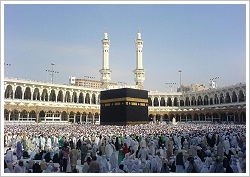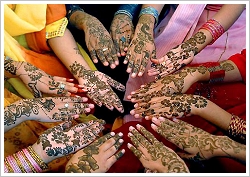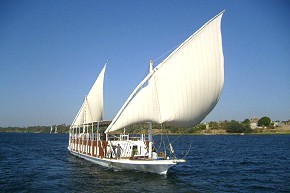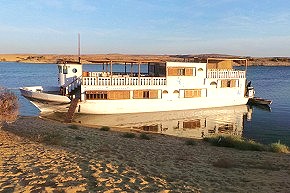We Provide
- Building Land
- Gabawi *1712 (350 sqm)
- Gorf *2105 (525 sqm)
- Gorf *2206 (700 sqm)
- Aqalta *2207 (1,050 sqm)
- House Building Service
- Architecture
- Real Estates
- Villa Hana, Ramla
- Shell Apartment Papyrus, Habu
- Apartment Hatshepsut 2, Gezira
- Apartment Hatshepsut 3, Gezira
- Apartment Hatshepsut 4, Gezira
- Holiday Flats
- Hatshepsut 1 (1 BR), Gezira
- Hatshepsut 2 (1 BR), Gezira
- Nile View (1 BR), Ramla
- Hatshepsut 3 (2 BR), Gezira
- Hatshepsut 4 (2 BR), Gezira
- Hatshepsut 5 (2 BR), Gezira
- Hatshepsut 7 (2 BR), Gezira
- Hatshepsut 9 (2 BR), Gezira
We Organise
We Report
- Sorry, no more news!
- News 2014 (26)
- News 2013 (76)
- News 2012 (92)
- News 2011 (125)
- December 2011 (18)
- November 2011 (10)
- October 2011 (10)
- September 2011 (6)
- August 2011 (5)
- July 2011 (5)
- June 2011 (19)
- May 2011 (15)
- April 2011 (13)
- March 2011 (4)
- February 2011 (11)
- January 2011 (9)
- News 2010 (31)
- News 2009 (12)
- News Overview
Useful Tools
Dahabiya Nile Cruises• from Esna to Aswan |
Lake Nasser Cruises• from Aswan or Abu Simbel |
![]()
Living in Luxor - News in and around Luxor in November 2011
![]()
 When you mouse over a picture you will get a description and copyright information. Unless otherwise specified copyright is reserved by Living in Luxor. External links are marked with
When you mouse over a picture you will get a description and copyright information. Unless otherwise specified copyright is reserved by Living in Luxor. External links are marked with ![]() .
.
![]()
Parliamentary Elections in Luxor
(30/11/11)
Update: As no canditate could hold the majority of votes in Luxor there will be a second ballot on 5th of December.
(29/11/11)
On Monday, 28th of November, the first stage of Egypt's first post-Mubarak
parliamentary elections began as scheduled. According to an elaborated system voters will elect in several stages until March 2012 representatives for the People's Assembly, the lower
house of parliament, followed by elections for the Shura Council, or upper house of
parliament.
Luxor rated among the first 9 governorates, their citizens were be called upon to cast their votes for the People's Assembly - they did it keenly: While under Mubarak's rule just 15% of the eligible voters went to the ballot box, during the last two days their turnout was more than 60% standing patiently in long queues for voting. For the People's Assembly, 6,591 candidates are running for individual seats, while 590 are running on party lists.
On occasion of the Egyptian elections Google Egypt created a special logo (Doodle) for the search page:
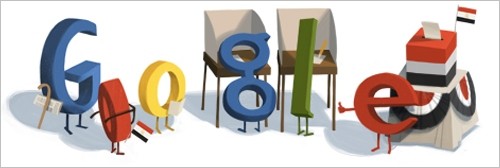
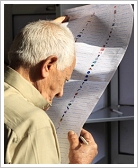
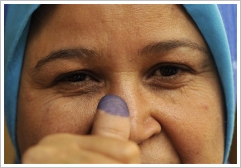
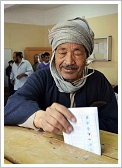
![]()
Happy (Islamic) New Year!
(25/11/11)
On 26th of Ncvember the year 1433 of the Islamic calendar also called Hijri calendar begins. It is a lunar calendar. Each month has either 29 or 30 days, so the Islamic year is about 11 days shorter than a solar year. 33 lunar years are the equivalent of 32 solar years.
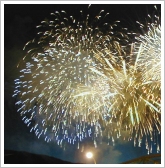
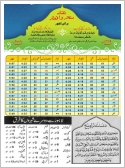
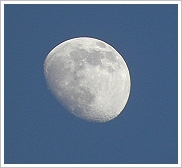
![]()
Egypt from Past to Present - Art Exhibition, Luxor East Bank
(11/11/11)
Last night an exhibition opened at the Sofitel Winter Palace Hotel, which combines the historic monochrome photographs by Rudolf Lehnert with contemporary paintings and drawings by the German artist Mathias Buss.
The photographer Rudolf Franz Lehnert (1878 - 1948) was fascinated by the magic of the orient and travelled for the first time to Egypt in 1923. In 1924, he established together with his friend Ernst Heinrich Landrock (1878 - 1968) the wholesaler's "Lehnert & Landrock" in Cairo in order to sell facsimiles of his photographs and in 1925 a retail shop. Edouard Lambelet, Landrock's heir and today's business owner, presented numerous photographs, which are not displayed in the exhibition, in a slideshow.
Mathias Buss (1968 - ) studied architecture before he turned to painting in 2002. In the exhibition he shows his (saleable) paintings and drawings with Egyptian scenes.
"Egypt from Past to Present" will be open up to and including January 2012.
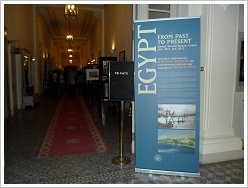
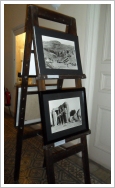
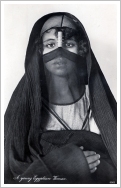

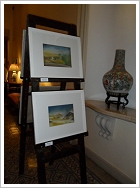
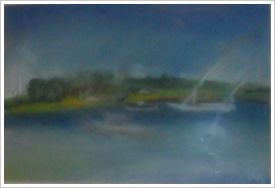
![]()
Go-Ahead for Nile Cruises from Cairo to Aswan
(09/11/11)
Since 1994 Nile cruises were not allowed to operate between Cairo and Aswan. Since then the big swimming hotels operated just between Luxor and Aswan. Two days ago Egypt's tourism authority has announced at a press conference in London that the River Nile will be opened up for the resumption of the long Nile cruise, the full 14-day voyage all the way from Cairo to Aswan. This is part of a plan by the Egyptian government to boost tourism.
The longer cruises were stopped for various reasons, including the fact that the river was becoming severely silted up. Measures like dredging the riverbed, repairing the docks and improvements to the infrastructur are all part of the new plan. However, sailing permits will be issued only to boats with shallow drafts for now.
Although most of the ancient Egyptian sights are along the "old" stretch (the temples and tombs in Luxor, the temples of Esna, Edfu, Kom Ombo and Philae) - the route between Cairo and Luxor has plenty to offer, too: the temple at Dendera, the rock-cut tombs at Beni Hasan and the open-air museum in Memphis as well as temples, tombs and pyramids at Saqqara. As the long cruise lasts between 11 and 14 days there will be more time for relaxing and watching life on the river banks also.
The announcement is so new that itineraries haven't even been planned yet. Now the travel companies will work hard to offer them in their program for spring 2012. We will keep you informed!

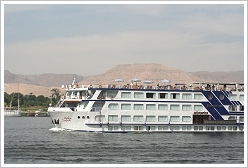
![]()
The Future of Wind Power in Egypt
(08/11/11)
In 2008, the Egyptian Government decided to produce 20 percent of its energy from renewables, with 12 percent being generated by wind power. With wind speeds of 7 - 10 metres per second the Gulf of Suez coast is the country's ideal area for wind power installations. But even the large desert regions both to the east and the west of the Nile River have average annual wind speeds of 7 - 8 metres per second.
With the help of the Danish, German and Spanish governments Egypt built his first wind farm already in 2001. The Zafarana Wind Farm is located 80 km south of Suez and went on line in 2010. Now, Egypt is seeking investors for four more ambitious projects, which are to be realised in the next 20 years, the first of them until 2015/2016. Beyond that production facilities are to be built to manufacture turbine towers and blade facilities for the local and foreign markets.
From 31st of October to 2nd of November the World Wind Energy Conference (WWEC 2011) & Renewable Energy Exhibition took place in Cairo under the motto: Greening Energy - Converting Deserts into Powerhouses. Especially against the background of the ongoing nuclear disaster in Japan, the Conference calls for an immediate switch away from high-risk nuclear and fossil energy technologies to renewable energies. The conference applauds the scientifically substantiated statements made that a 100 % renewable energy supply can be reached worldwide by the year 2030. Side benefit of the clean energy: in Egypt alone, 75,000 jobs can be created by 2020 in the local wind industry!
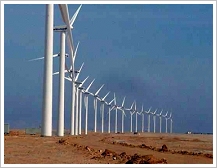
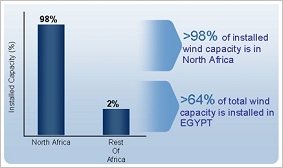
![]()
Egypt's 1st Solar-Thermal Plant
(07/11/11)
Since July, 2011 it's feeding energy into the grid: Egypt's first Solar Combined Cycle (ISCC) power plant. It is located in Kuraymat, 90 km south of Cairo and one of the first hybrid plants combining natural gas and sun. At night Kuraymat operates as a combined cycle gas power plant producing natural gas-fueled energy. During the day a 130,000 square meter solar thermal field filled with parabolic trough technology converts energy captured from the sun into steam-powered electricity. The facility’s energy performance reaches 67%, approximately 10 percentage points more than the most modern cycles in existence! By the way, Kuraymat plant is not part of the latter Desertec program, that we will cover elsewhere.
Subject to official authorisations the Egyptian conglomerate Orascom plans to manufacture own solar components within the next five years. Up to now they were delivered by the German Flagsol.
During a World Economic Forum event at the end of October, energy experts predicted that solar power will be the most important source of future energy. They urged Arab nations to move away from oil dependence and explore the high potential of solar energy. Capturing a mere 0.3% of the light falling on the Sahara and Middle East could power the entirety of Europe with clean, renewable energy!
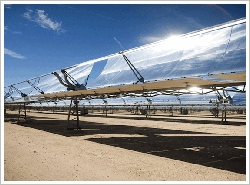
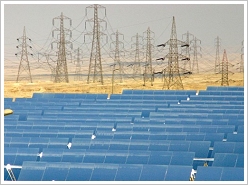
![]()
New Bakery, Luxor West Bank
(06/11/11)
Sometimes dreams come true :-). A couple of days ago a new bakery opened in Gezirat el-Beirat with a range of cakes, breads and biscuits. In recent years Abu el-Ata has worked in hotels in Qatar and Yemen and backed home to Luxor quite recently. Currently there are tarts, cream slices, stirred cakes, various biscuits as well as loafs of toast and white bread. You'll find el-Ata's bakery on the West Bank in the small street leading to Kareem Hotel (3rd doorway to the left of the hotel). Special requests will be answered, too.

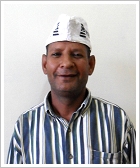
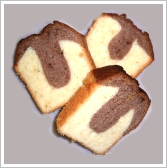

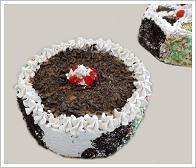
![]()
Solar Sinter Project in Egypt's Sahara Desert
(05/11/11)
What is redundant in the desert? Sun and sand, right. Meaning on the one hand vast energy, on the other hand silica which is because of its quartz content suitable for producing glass. The two materials inspired the German deisgner Markus Kayser to develop an ingenious machine: the Solar Sinter. (Sintering is the process of converting a powdery substance via a heating process into a solid form.) Kayser's Solar Sinter is a solar-powered 3D-printing machine that is able to make glass objects just in the desert. A large Fresnel lens focuses a beam of sunlight, creating temperatures between 1400 and 1600 degrees Celsius. This is hot enough to melt silica sand and build up glass shapes, layer by layer, inside a box of sand mounted under the lens. Once all the layers have been melted into place the piece is allowed to cool and dug out from the sand box. A two week testing period in the Sahara desert near Siwa, Egypt illustrated that the device works. At the end a sculpture and a bowl had been created, which took their solid shape just by solar energy and desert sand. Watch the video to see how it works exactly.
Kayser believes that in time, variations of the Solar Sinter could be used in full-scale architectural projects. That would be really sustainable!
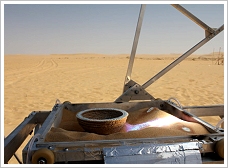
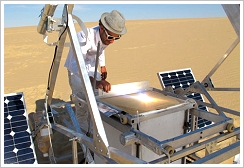
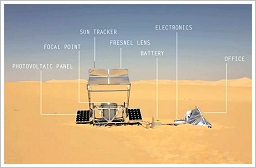
![]()
SunGlacier Art Project in Egypt's Sahara Desert
(04/11/11)
They say we are currently between ice ages while at the same time the globe is warming up and weather is becoming ever more extreme. The Dutchmen Ap Verheggen, artist and founder of the SunGlacier Art Project proofs that all that mustn't be just against us. Thereby he has an apparently impossible and unimaginable idea in his mind: to create ice in the Sahara desert in response to the challenges of global warming.
His first work of art is to be formed as a gigantic elm-leaf shaped structure in the Egyptian Sahara. The more sunrays it catches the more ice it will produce. It will work like ths: Solar cells on the artwork produce energy to drive a cooling unit to produce ice settling on the sculpture from the moisture in the surrounding air - and thus water. Utopistic? According to Verheggen the humidity in Egypt’s portion of the Sahara desert is equivalent to that of the Netherlands and that it is sufficient to generate ice and water.
At the end of October, the first line of experiments in a climate controlled room that simulates the same conditions as in Aswan, Egypt, on a hot and dry day in summertime, have been successful. They made a 10cm slab of ice! The test has not yet achieved the hoped-for kinds of efficiencies, but the creative and aesthetic project is still in its infancy. Anyway, the progress is quite remarkable and raises hope for water scarce countries in the Middle East.
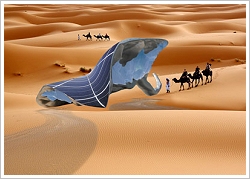
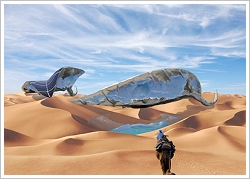
![]()
Feast of Sacrifice - Eid al-Adha, Egypt
(04/11/11)
From 6th to 9th November, Eid al-Adha, the most important religious holiday, will be celebrated by Muslims worldwide. Eid al-Adha celebrations take place at the peak of the Hajj, the annual pilgrimage to Mecca, which has to be done on a fixed date according to the lunar islamic calendar that is about eleven days shorter than the Gregorian calendar used in the Western world.
The festival, also called The Greater Eid, is held to commemorate the willingness of Ibrahim (Abraham) to sacrifice his son Ishmael (Ismail) as an act of obedience to God, before God intervened to provide him with a ram to sacrifice instead. For Muslims who can afford it it's a religious duty to sacrifice their best domestic animals. The meat is divided into three parts. The family retains one third of the share; another third is given to relatives, friends and neighbors; and the other third is given to the poor and needy.
As it is at Eid al-Fitr (The Lesser Eid) the visit of mosques, cemeteries and relatives are part of the feast. Men, women, and children are expected to dress in their finest clothing to perform Eid prayer.
Because of the continually increacing prices the Egyptian Government decided to distribute 180,000 containers with basic foodstuffs and meat for inexpensive prices in several governorates to help meet the Eid demand.
Kul sana wa inta tayeb, inti tayeba!
